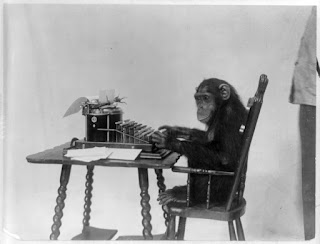Where are the Dorian Gray’s?
I recently watched a movie
adaptation of The Picture of Dorian Gray and realized that there are no
examples of human mutants who do not age in the manner of Dorian Gray. There
are examples of old people doing well into their 100’s and rare young children with the bodies
of 70 year olds who do the opposite, but I am unaware of any records of any 75 year olds who could pass for
20. Why is that?
First, for those who
have not read The Picture of Dorian Gray by Oscar Wilde, the important
point here is that the main character does not age while retaining the
body of 20 year old until his final demise in his 70's. Evolution seems to have no trouble pulling
off this trick in some animals like sea urchins and seed harvester ants. This
is called negligible senescence. The lack of specific cases in humans suggests
that there are no single mutations or even pathways that are master controls of
aging. If such a simple mechanism existed, then by chance someone should have
been born with a modified version of this pathway and would have never
aged. I cannot imagine that such a
person could have passed unnoticed in history.
 People do not
technically begin to age until around thirty when our age specific mortality
rate begins to double about every eight and a half years. In the figure, the
flat line between twenty and thirty means that one’s probability of dying is
constant over time. Around thirty, something happens and we begin to age in the
sense that our probability of dying increases exponentially with time (the straight increasing part of the curve). Dorian
Gray, and animals with negligible senescence, simply continue with the constant flat level trajectory indefinitely. This transition around thirty is the area that
evolution must act on to evolve longer life spans. All of the genes that worsen
or improve health after this point are just random noise because they work
after most offspring have been born and therefore do not affect fitness. The
key to unlocking aging then would seem to be asking what is the difference
between a 25 year old and 35 year old as opposed to worrying about why some
people live to 100 and others don’t. Given the complete lack of any humans mutating to a
permanent flat mortality rate all at once, and that there are many examples of evolution
of longer life span, there must be human variants out there who transition a
little later into their 30’s before crashing into the next problem causing
exponential mortality increase. Perhaps by identifying people who seem to
prolong youth slightly into their 30’s, we can pick off the first step by
understanding their physiological trick, then look for the next set of people
who seem to look young for their age and so on.
. . .
People do not
technically begin to age until around thirty when our age specific mortality
rate begins to double about every eight and a half years. In the figure, the
flat line between twenty and thirty means that one’s probability of dying is
constant over time. Around thirty, something happens and we begin to age in the
sense that our probability of dying increases exponentially with time (the straight increasing part of the curve). Dorian
Gray, and animals with negligible senescence, simply continue with the constant flat level trajectory indefinitely. This transition around thirty is the area that
evolution must act on to evolve longer life spans. All of the genes that worsen
or improve health after this point are just random noise because they work
after most offspring have been born and therefore do not affect fitness. The
key to unlocking aging then would seem to be asking what is the difference
between a 25 year old and 35 year old as opposed to worrying about why some
people live to 100 and others don’t. Given the complete lack of any humans mutating to a
permanent flat mortality rate all at once, and that there are many examples of evolution
of longer life span, there must be human variants out there who transition a
little later into their 30’s before crashing into the next problem causing
exponential mortality increase. Perhaps by identifying people who seem to
prolong youth slightly into their 30’s, we can pick off the first step by
understanding their physiological trick, then look for the next set of people
who seem to look young for their age and so on.
. . .
Comments
Post a Comment